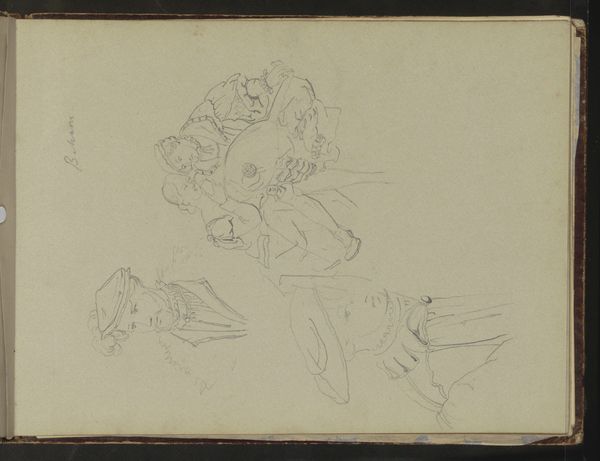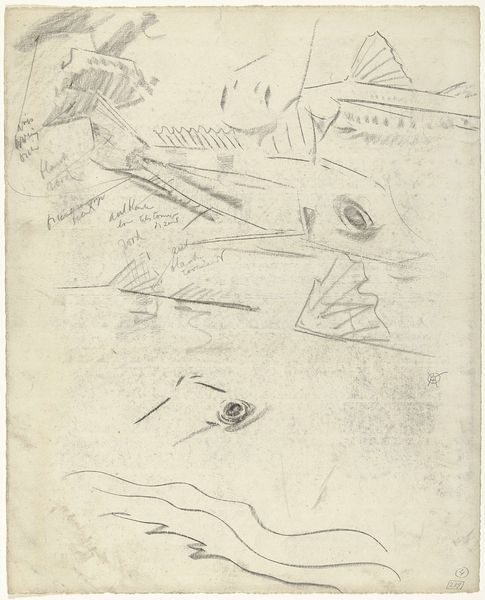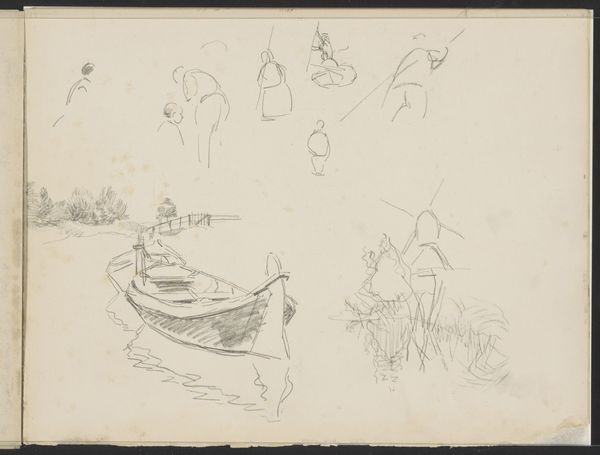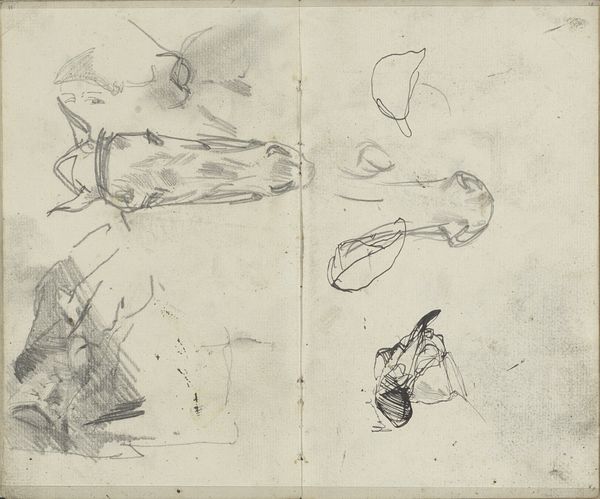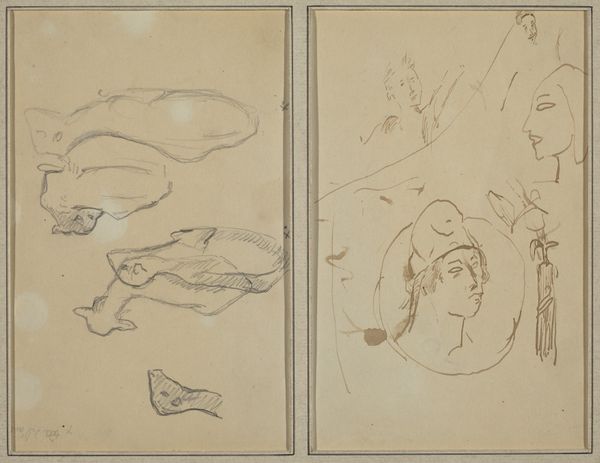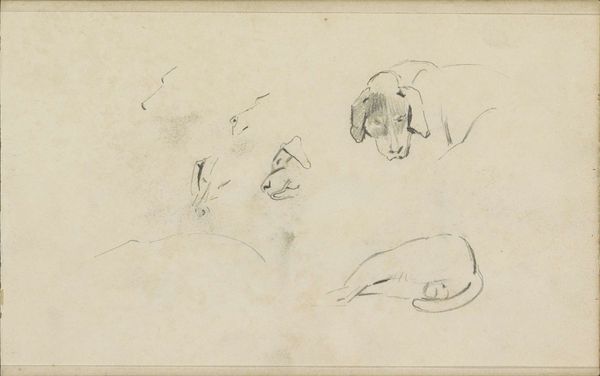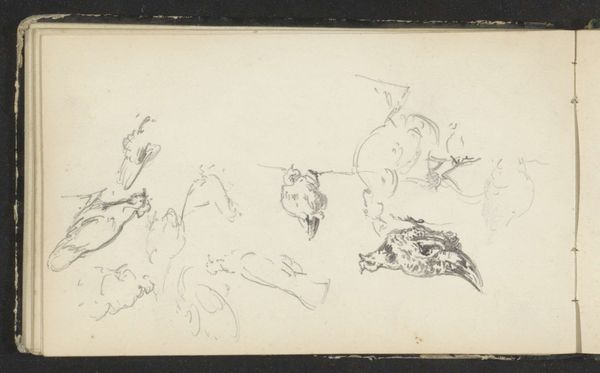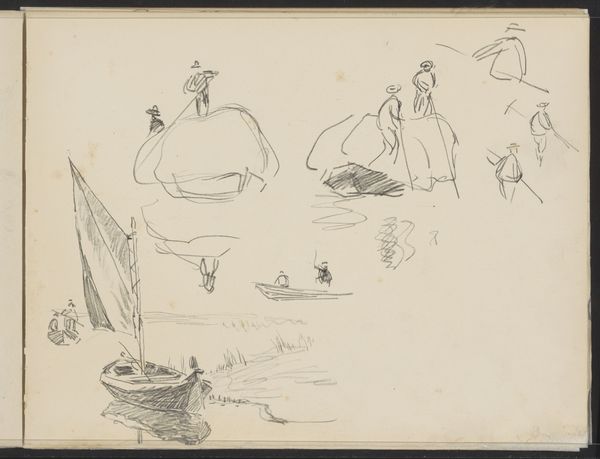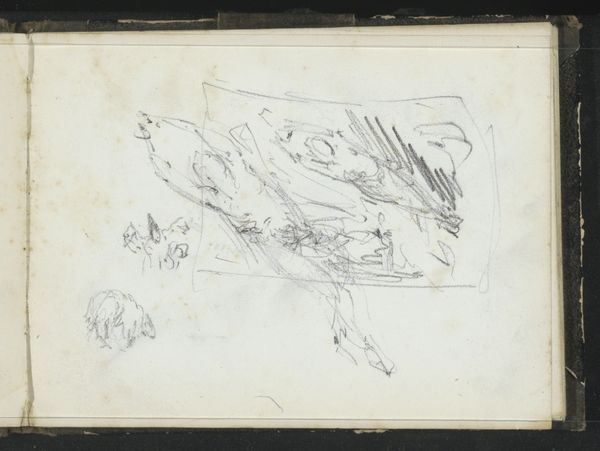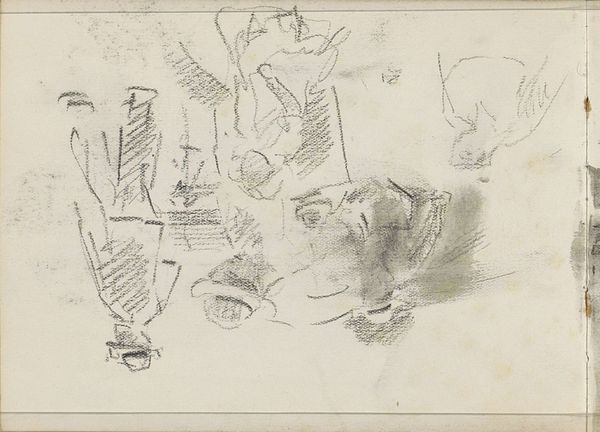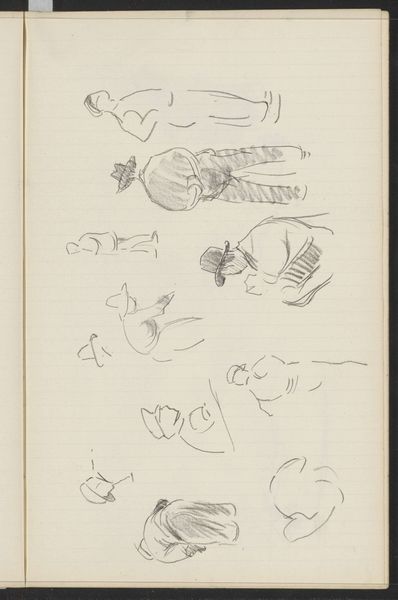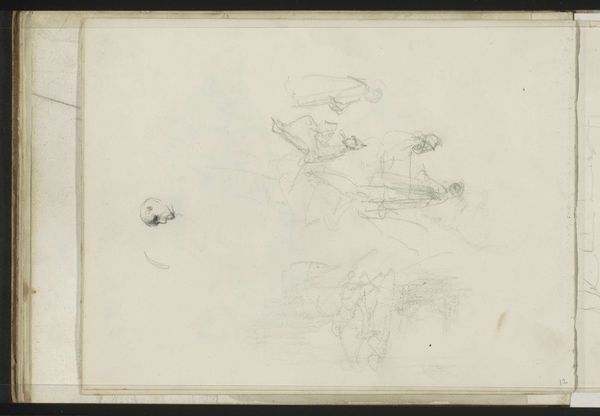
Sketches of Figures (in Sketch Book With Twenty-six Sketches) 1840 - 1860
0:00
0:00
drawing, print, paper, pencil
#
portrait
#
drawing
#
face
# print
#
figuration
#
paper
#
child
#
coloured pencil
#
romanticism
#
pencil
Dimensions: Sheet (page): 7 7/8 x 10 7/8 in. (20 x 27.6 cm)
Copyright: Public Domain
Curator: This sheet of sketches by Frederic Leighton, dating roughly between 1840 and 1860, presents a fascinating glimpse into the artist’s process. The medium is graphite on paper, currently held at the Metropolitan Museum of Art. Editor: It’s really quite charming! There’s a gentleness to the lines, a softness, especially around the children's faces. Curator: Consider how sketchbooks operated within Leighton’s broader artistic practice. Were these studies preparatory to larger, finished works? Or did the sketch book operate as its own sphere of artistic production, removed from the strictures of exhibition and sale? Editor: Interesting point. Focusing on what’s present: the loose rendering allows the eye to fill in details, particularly with the figure seated beneath the tree. Notice the contrast of the stark negative space around the other figures. Curator: Yes, and let’s not overlook the labor inherent in producing the paper itself, or the sourcing of graphite for the pencil. Even simple drawings like this implicate broader systems of extraction and commodity production characteristic of the era. What role did this type of artistic production serve for middle and upper-class consumers? Editor: I am struck by the variation in tone. The face with the hat is more modeled than other drawings on this page. You see the attention to the shading under the hat which renders a subtle atmospheric perspective to the sketch. The figure walking, on the other hand, seems barely outlined and yet possesses a striking vitality. Curator: And thinking more conceptually, are these sketches primarily about observed reality, or are they opportunities for Leighton to exercise a certain vision, a cultivated sensibility toward representing childhood and idealized figures within his own social milieu? These considerations shape how we understand both the artist's intentions and the reception of the artwork. Editor: Well, I am glad we took the time to examine these initial lines. It helps us to more completely visualize Leighton’s work. Curator: Agreed, investigating an artist's preliminary studies often yields insights that finished canvases might conceal.
Comments
No comments
Be the first to comment and join the conversation on the ultimate creative platform.
